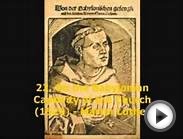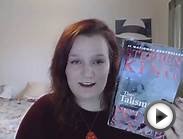 Tom Jones
Tom Jones
Henry Fielding (1749)
Joyous and irrepressible, bawdy and fast, Fielding’s picaresque adventure is short on moralising over sexual liaisons, and long on a rich depiction of 18th-century life. Ceaselessly engaging and everlastingly fresh.
Emma
Jane Austen (1815)
Of all Austen’s heroines, Emma Woodhouse is the most beguilingly flawed; and naturally, beneath the comedy of disastrous match-making and snobbery, the narrative has a keen intelligence and finely wrought moral sense that makes even a picnic on Box Hill seem universal.
Great Expectations
Charles Dickens (1860)
All that we associate with Dickens, from the large characters to the sense of social injustice, finds its most perfect expression here: Pip’s journey from blacksmith’s boy to nouveau gentility is an elegy of regret and nostalgia; and London and the windwhipped Thames estuary are unforgettably conjured.
 What Maisie Knew
What Maisie Knew
Henry James (1897)
Legal divorce came to England in 1857 and was still a rarity when 40 years later, James’s novel told of a young girl being shuttled between two ghastly separating parents. Bleak, yet perfectly formed.
Middlemarch
George Eliot (1874)
 Eliot brought her formidable acuity to the evocation of a very particular time – the political reforms of 1832 – but she also pioneered a real depth of psychological understanding in her unforgiving depictions of disintegrating love. Virginia Woolf described it as the only English novel “for grown-up people”.
Eliot brought her formidable acuity to the evocation of a very particular time – the political reforms of 1832 – but she also pioneered a real depth of psychological understanding in her unforgiving depictions of disintegrating love. Virginia Woolf described it as the only English novel “for grown-up people”.
Ulysses
James Joyce (1922)
Or: a day in the life of Stephen Dedalus and Leopold Bloom, as they criss-cross Dublin on June 4, 1904. Every word is pregnant with meaning, every character’s thought conjured with precision, yet it is brilliantly, consistently, laugh-outloud funny.
Mrs Dalloway
Virginia Woolf (1925)
Well-connected Clarissa Dalloway is to give a party later that evening; not far away, Septimus Smith, a victim of shell shock, sits in Regent’s Park, subject to hallucinations. Through their thoughtsWoolf addresses Society and the delicacy of sanity.
 Lady Chatterley’s Lover
Lady Chatterley’s Lover
D H Lawrence (1928)
The sex scenes and language are now inadvertently hilarious, but none of us were to know this until 1960, when the ban on this novel was lifted. Still startling, there is also another level here to do with landscape, inheritance and war.
A Dance to the Music of Time
Anthony Powell (first volume, 1951, 12th volume 1975)
A fantastically ambitious and panoramic sequence detailing the lives and loves of various interlocking mostly upper middleclass characters across the 20th century, it continues to draw in fresh enthusiasts.
I, Claudius
Robert Graves (1934)
Graves hit a rich seam with this imagining of the lost autobiography of Emperor Claudius. Lethal palace intrigues, poisonings and sex, as well as satisfyingly complex relationships gives ancient Rome a vivid new colour and energy.
At Swim-Two-Birds
Flann O’Brien (1939)
A book within a book within a book, a satirical evocation of 1930s Ireland, in which the characters write about one another, and these various fictional figments gang up on the notional author.




Source: www.telegraph.co.uk

|
The Crown Crime Companion: The Top 100 Mystery Novels of All Time Book (Broadway Books)
|
You might also like:




|
All the Light We Cannot See Book (Scribner)
|
Related posts:
























Berlin:City of Stones,Blankets, Bone,The Boulevard of Broken Dreams,The Dark Knight Returns. For the complete list click the link